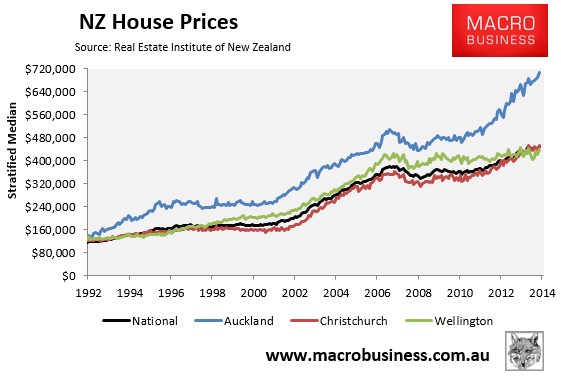The Real Estate Institute of New Zealand (REINZ) has released its October house price results, which registered a solid monthly rise in values, but another slowing in annual growth.
In the month of October, the national stratified median price rose by 1.4% to nearly $450,000. Prices rose by 2.9% in Auckland, 2.7% in Christchurch and 3.8% in Wellington. Over the quarter, prices rose by 2.7% nationally, with increases recorded in each of the major capitals.


